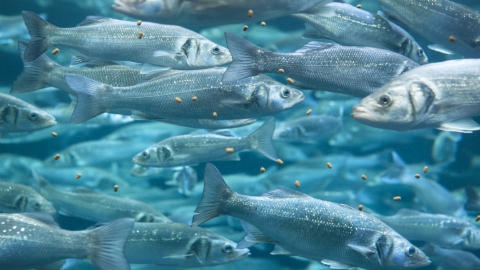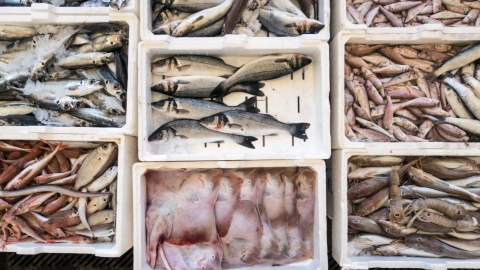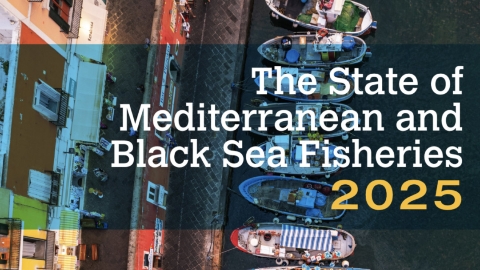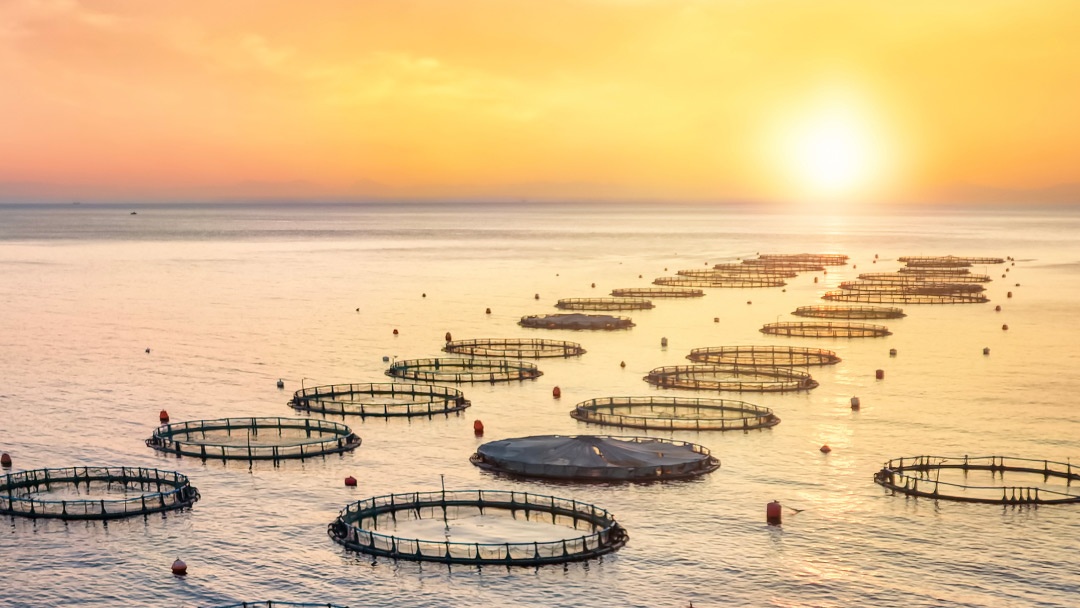
The aquaculture industry is undergoing a profound shift as it seeks to reduce its reliance on marine-derived ingredients in feed formulations. Sustainability concerns, limited resources, and volatile market prices have prompted manufacturers to explore alternative protein sources. However, replacing marine ingredients comes with significant challenges: maintaining feed efficiency, nutritional balance, and digestibility, while still ensuring optimal growth and fish health.
The core difficulty in this transition lies in ensuring that alternative ingredients can match the functional benefits of marine proteins. These are highly digestible and rich in essential amino acids, and they also contain unique water-soluble compounds-such as peptides and free amino acids-that enhance feed palatability and nutrient absorption. Many plant-based proteins, commonly used as alternative, lack these bioactive compounds, which can negatively impact feed intake and performance.
Marine Peptide Concentrates: A Functional Approach to Aquaculture Nutrition
As the industry has searched for sustainable replacements for marine-based feed ingredients, marine peptide concentrates (i.e., hydrolised marine proteins) have emerged as a promising solution. Produced through enzymatic hydrolysis, these concentrates break protein down into bioavailable, low-molecular-weight peptides and free amino acids, mimicking the water-soluble fraction naturally present in marine ingredients.
These concentrates not only provide essential nutrients but also offer additional functional benefits, making them valuable components in next-generation aquafeed formulations (Figure 1).
Palatability is a key factor in aquaculture nutrition, as higher feed intake is generally linked to better growth rates. Marine peptide concentrates are rich in soluble nitrogenous compounds that bind readily to fish chemoreceptors, triggering a strong feeding response. While replacing marine proteins with alternative ingredients often reduces feed intake, this effect can be mitigated through the inclusion of peptide concentrates. By enhancing the appeal and palatability of feed, they ensure fish consume the necessary nutrients to support optimal growth and health-particularly important in high-density farming conditions where competition for feed is intense.
Marine protein concentrates can also improve nutrient absorption. Their smaller peptides and free amino acids are easier to digest, enabling more efficient feed utilisation, reducing waste, and limiting nutrient discharge into the environment. At appropriate levels, bioactive peptides also support gut integrity, barrier function, immune competence, and stress resilience-bolstering overall fish health.
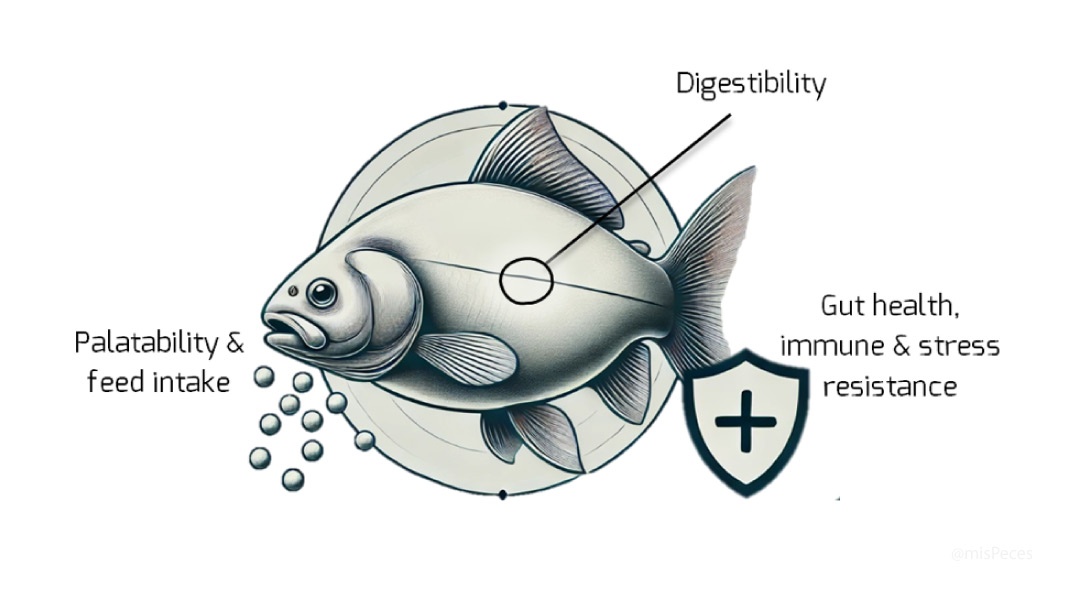
Figure 1. Functional benefits of marine protein concentrates. Enzymatic hydrolysis releases bioactive peptides that enhance feed palatability, nutrient absorption, and fish health-resulting in improved intake, growth performance, and feed efficiency.
Pepsea: A Next-Generation Liquid Marine Peptide Concentrate
Pepsea is a premium-quality marine peptide concentrate produced through a standarised enzymatic hydrolysis process. This carefully controlled method ensures the consistent release of various bioactive peptides from native proteins, guaranteeing reliable product quality across batches throughout the year.
Delivered in liquid form, Pepsea contains a minimum of 40% protein, with over 90% of peptides measuring below 3,000 daltons. It provides a cost-effective solution to enhances both palatability and feed performance. Trials across multiple fish species have demonstrated its ability to increase feed intake, growth rates, and feed conversion efficiency-making it a dependable tool for optimizing aquaculture formulations.
Testing Pepsea in Feeds with Varying Fishmeal Levels
In a first trial, sea bream (Sparus aurata) were fed a diet containing 10% fishmeal and supplemented with 2.6% Pepsea. After 10 weeks, results showed a 10% increase in feed intake, a 12% improvement in growth performance, and a 17% rise in feed efficiency compared to the control group (Figure 2A).
In a second trial, sea bream fed a diet with 20% fishmeal and 0.6% Pepsea exhibited a 3% increase in feed intake and a 4% improvement in growth over 11 weeks, relative to the control (Figure 2B).
In catfish (Clarias sp), a diet with 8% fishmeal and 0.4% Pepsea led to a 10% increase in feed intake, a 3% rise in growth performance, and a 5% improvement in feed efficiency after 8 weeks (Figure 2C).
These performance gains can be attributed to Pepsea’s high bioability of bioactive peptides, which not only enhance feed palatability but also stimulate digestive enzymes, thereby optimizing protein absorption and utilisation. Additionally, the health benefits associated with Pepsea—such as improved gut condition and antioxidant protection—likely contributed to better growth and feed conversion.
It is now standard practice to supplement aquafeeds with palatability enhancers during critical periods such as weaning, oral medication, or when fish experience stressors like temperature fluctuations or poor water quality. Pepsea can support feed consumption and nutrient uptake during these challenging times, helping to maintain growth and facilitate recovery.
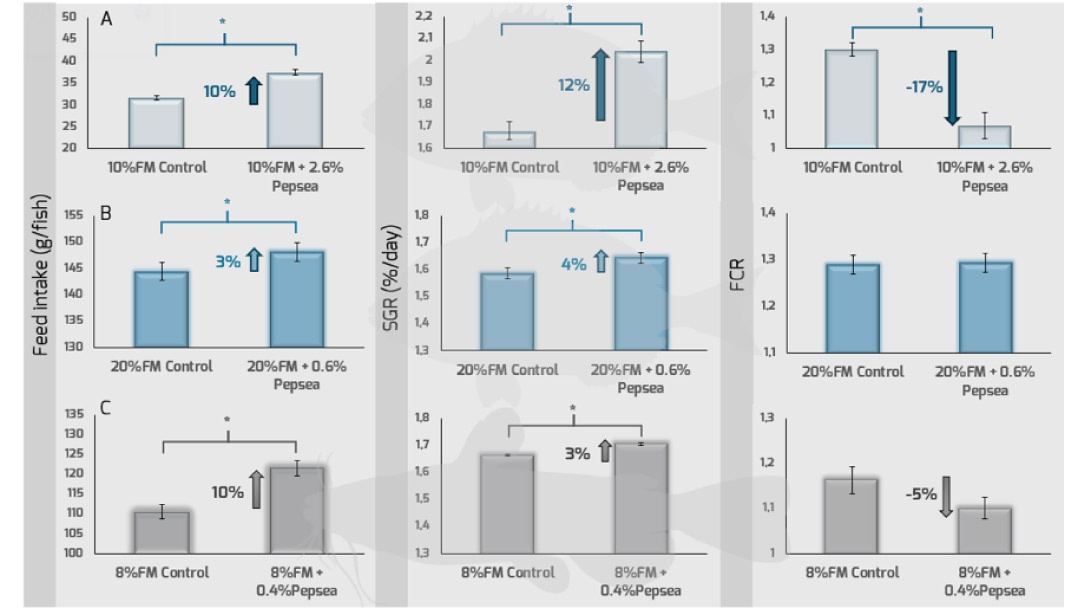
Figure 2. Improvements in feed intake, specific growth rate, and feed conversion ratio in sea bream and catfish at different Pepsea and fishmeal inclusion levels.
(A) 2.6% Pepsea in sea bream feed with 10% fishmeal (11–40 g).
(B) 0.6% Pepsea in sea bream feed with 20% fishmeal (46–157 g).
(C) 0.4% Pepsea in catfish feed with 8% fishmeal (19–126 g).
Conclusion
Pepsea is a high-quality liquid marine peptide concentrate, providing at least 40% protein and over 90% peptides under 3,000 daltons. It enhances feed intake, growth, and feed efficiency across various fish species and fishmeal levels. Pepsea offers a cost-effective solution for improving performance and sustainability in aquafeed formulations.

